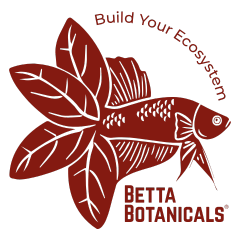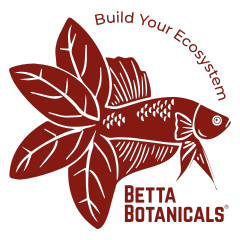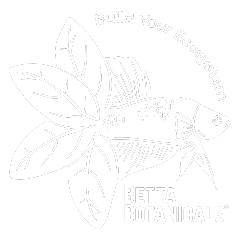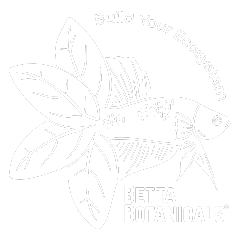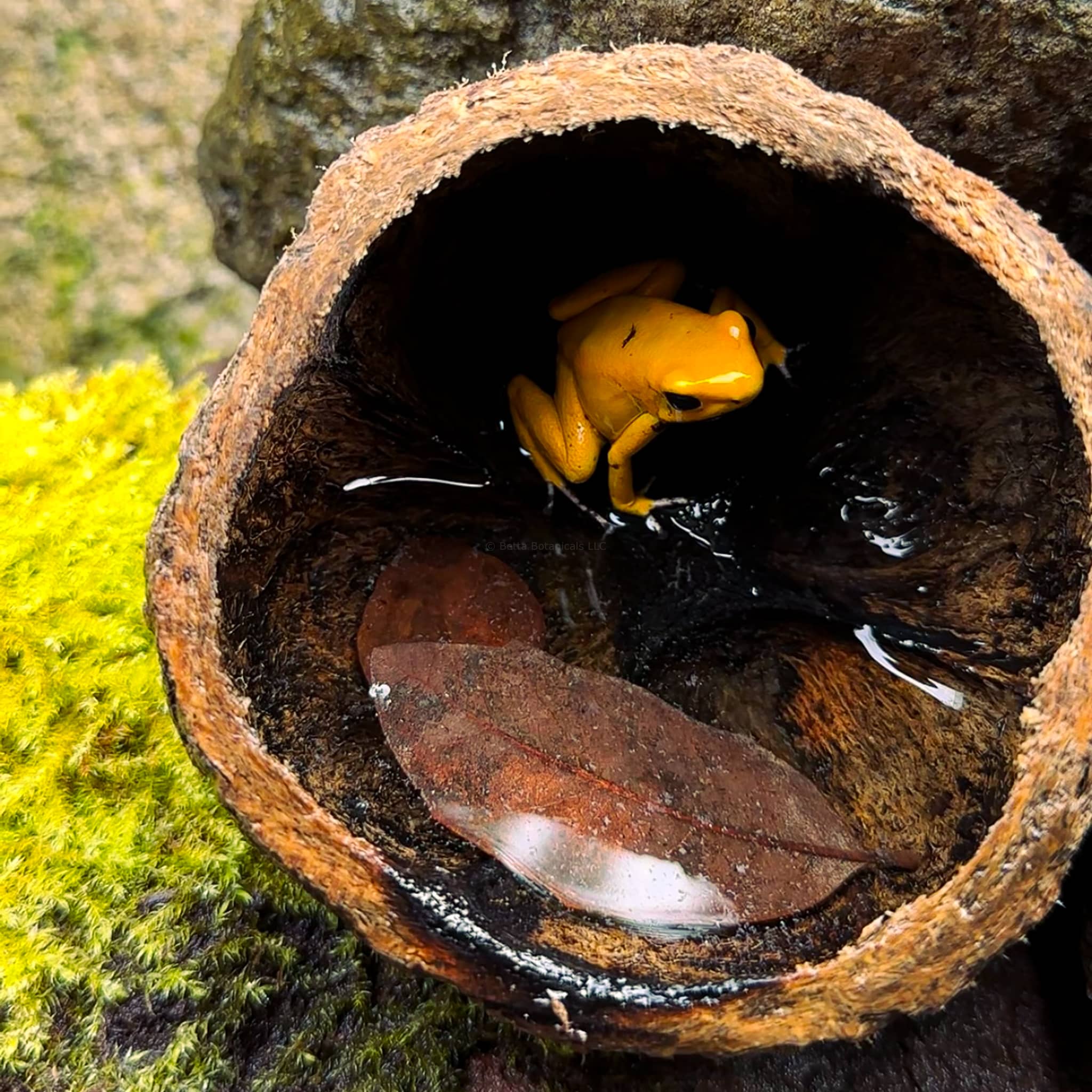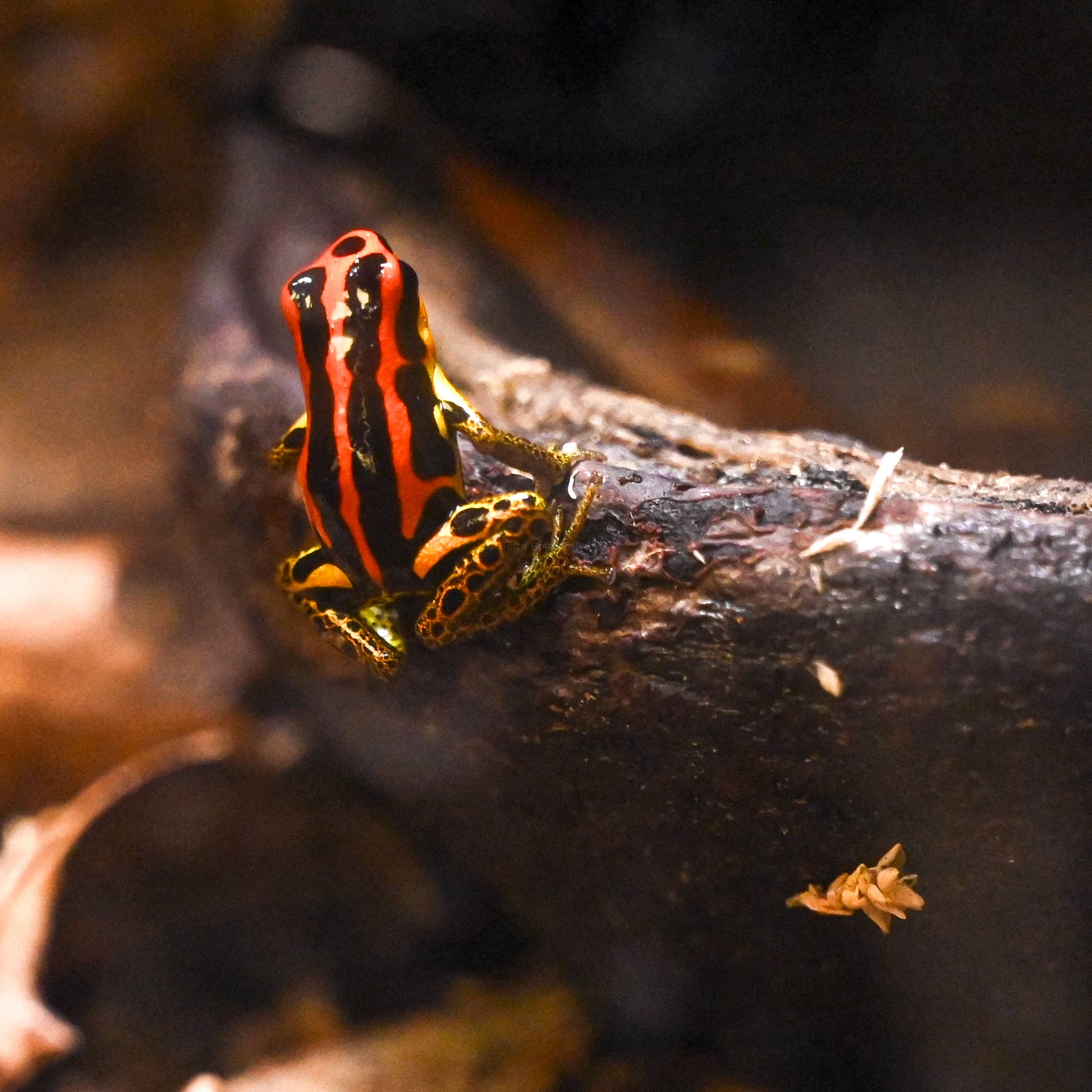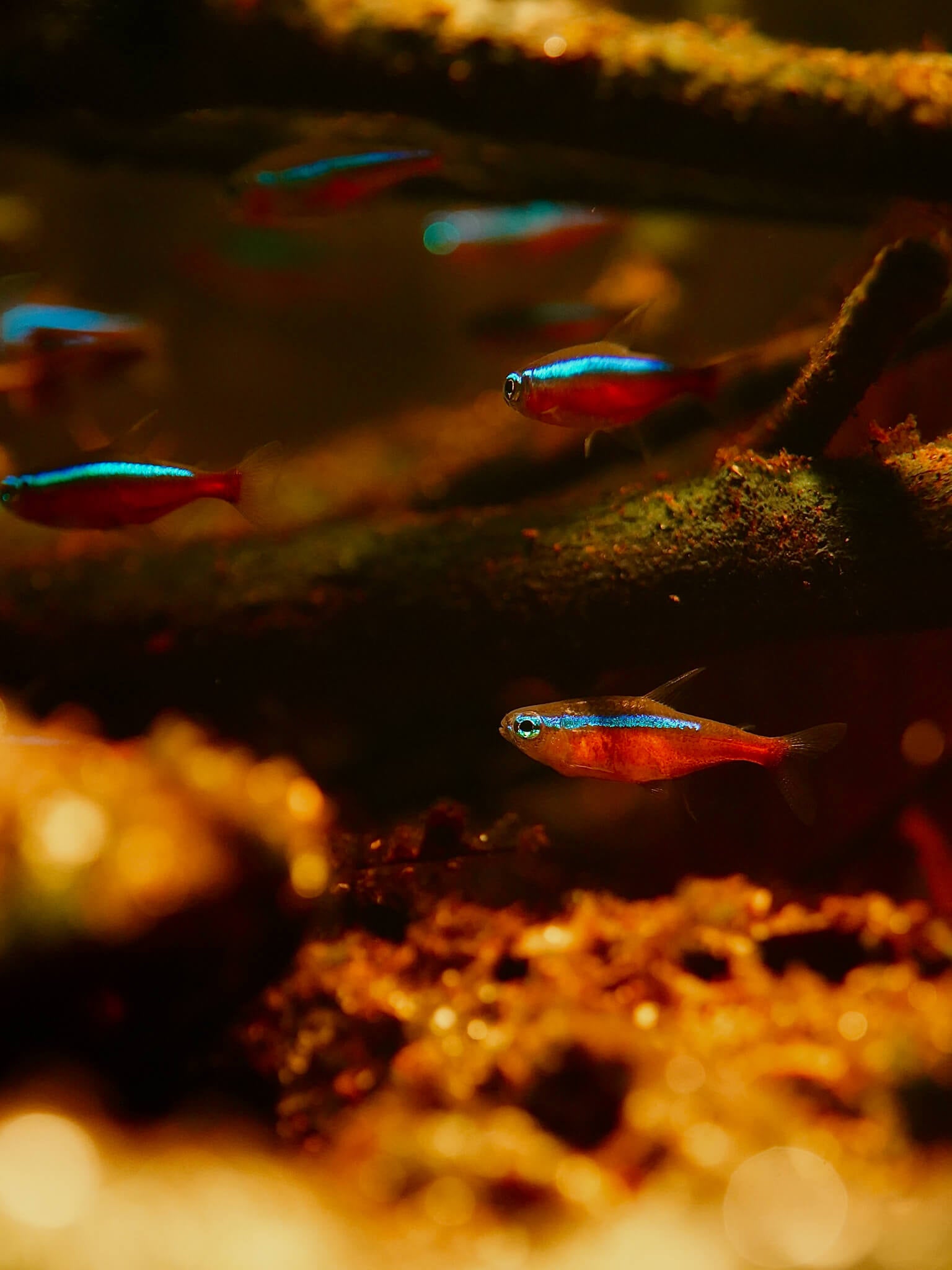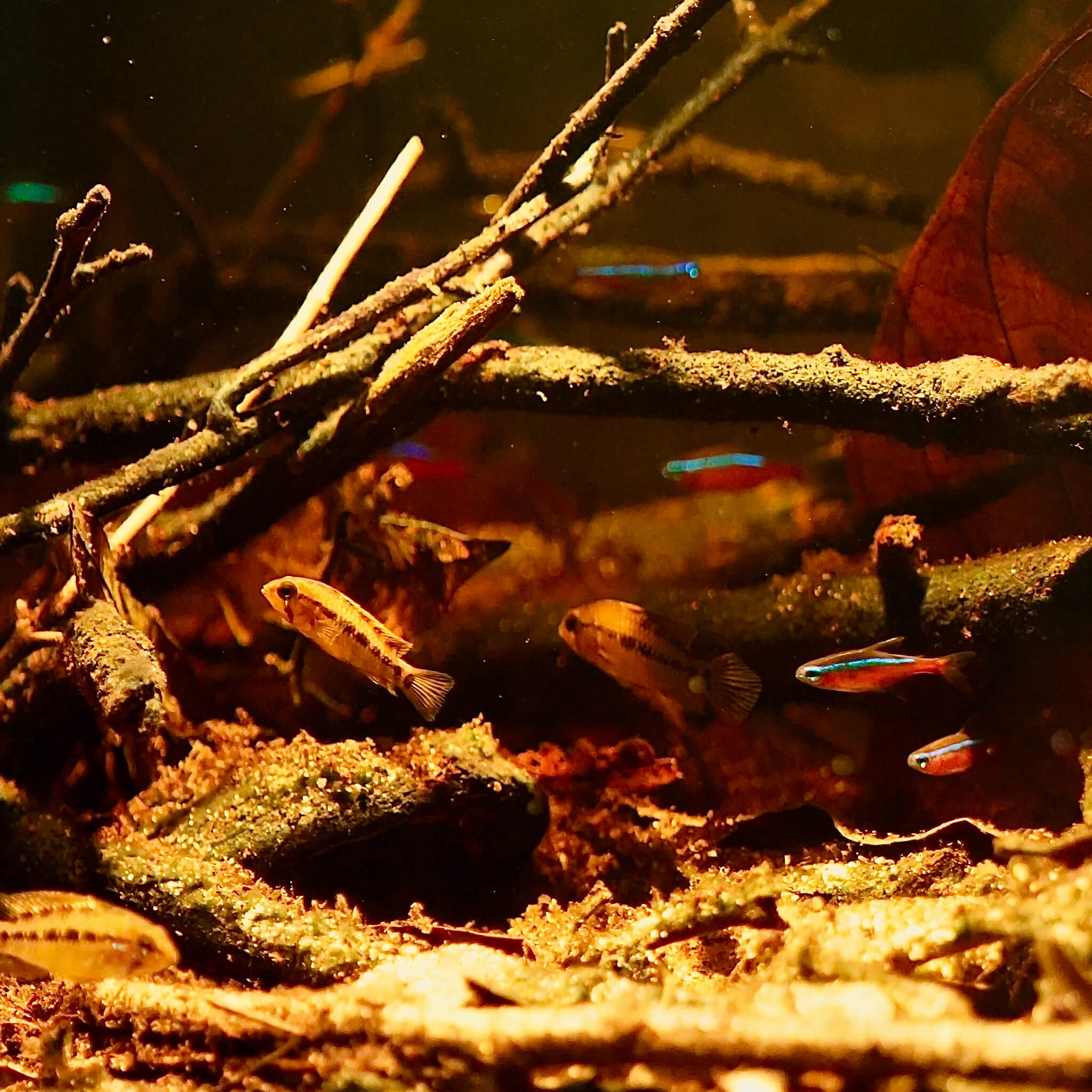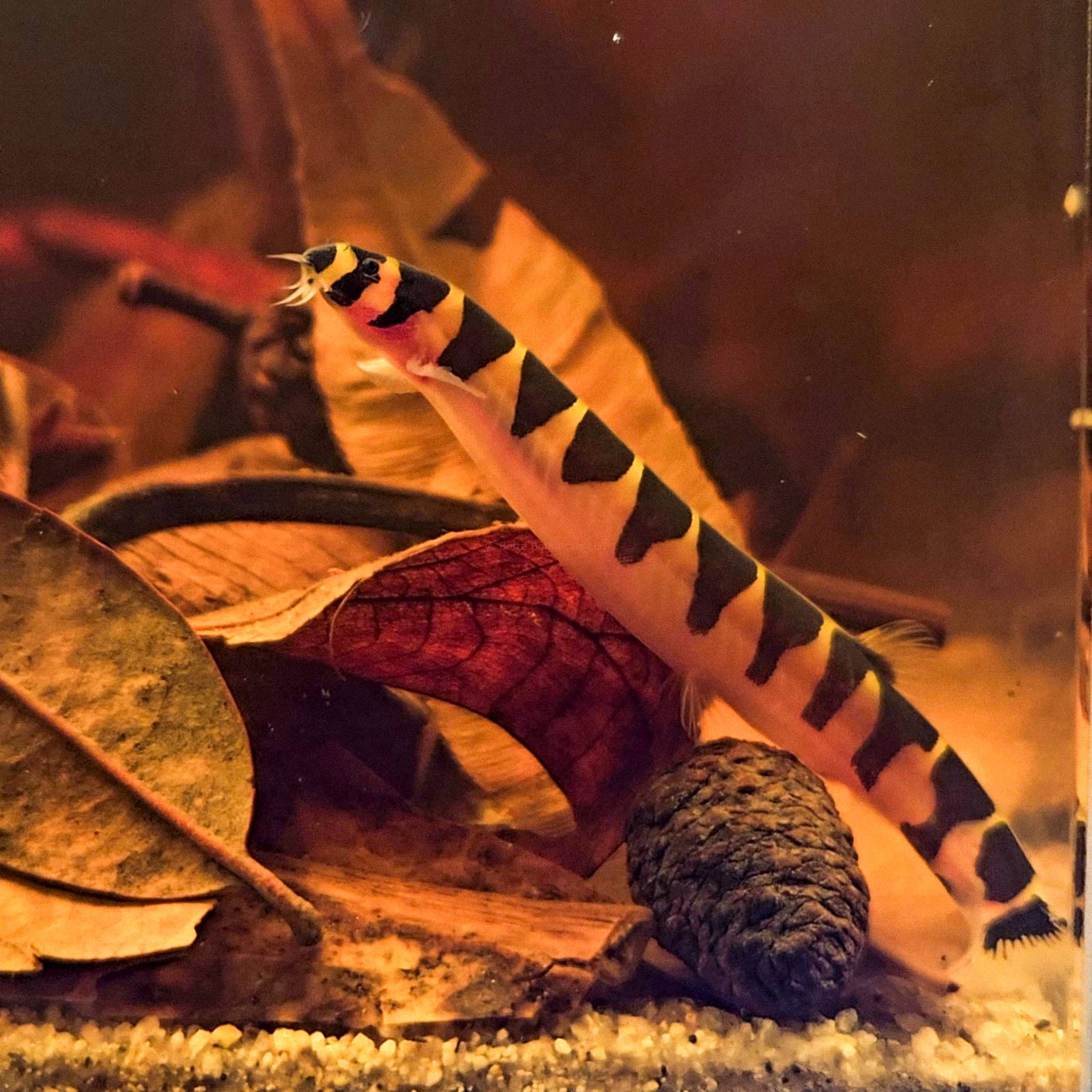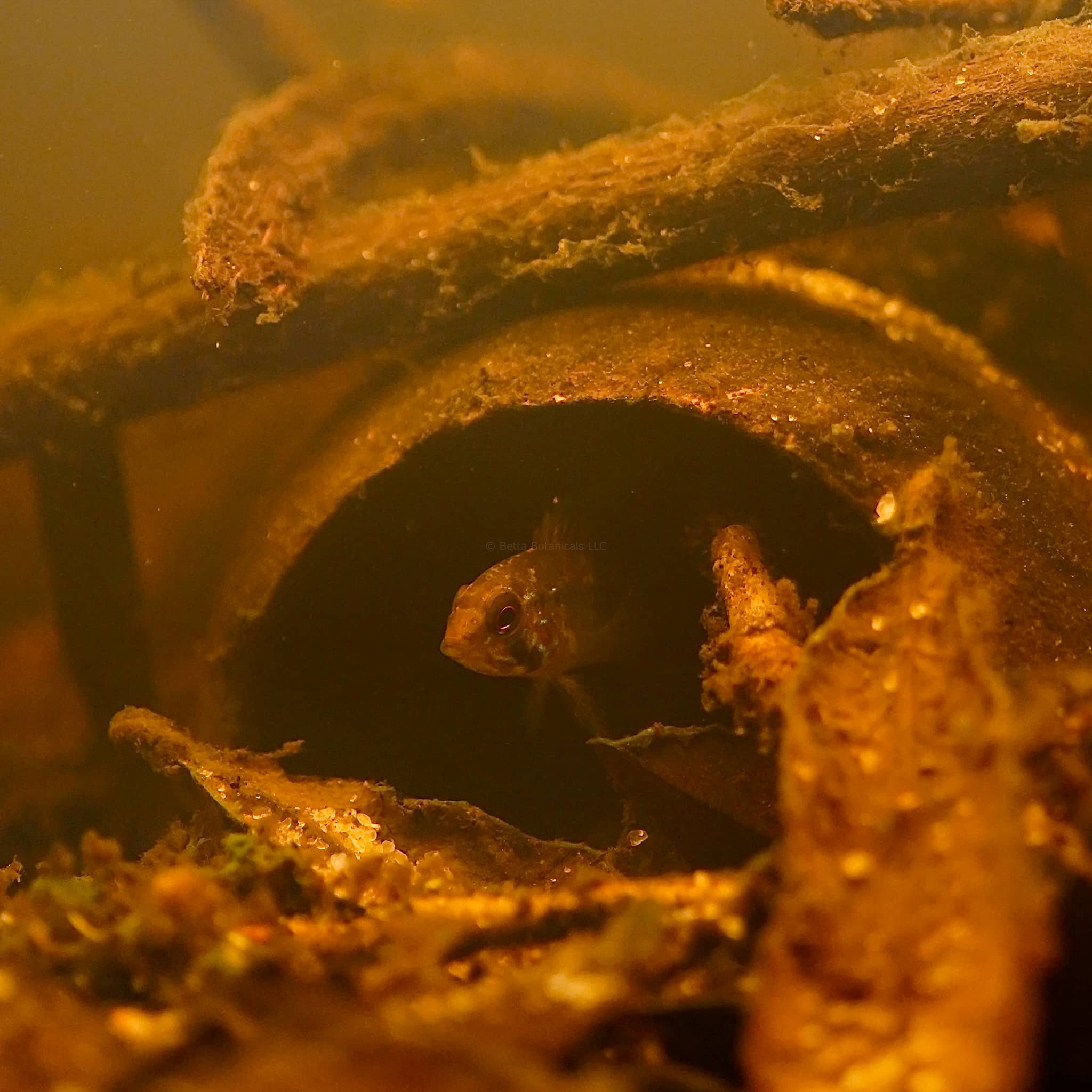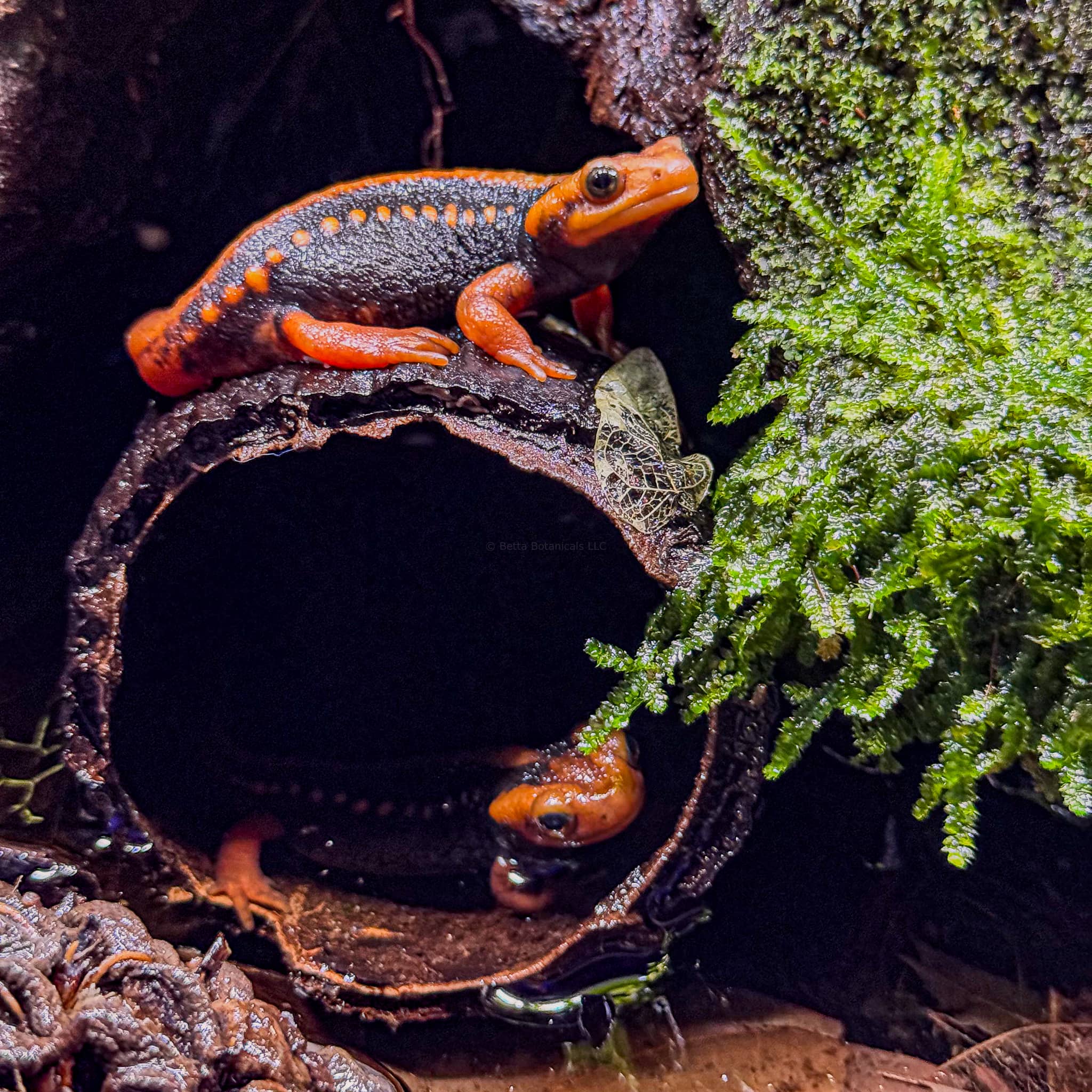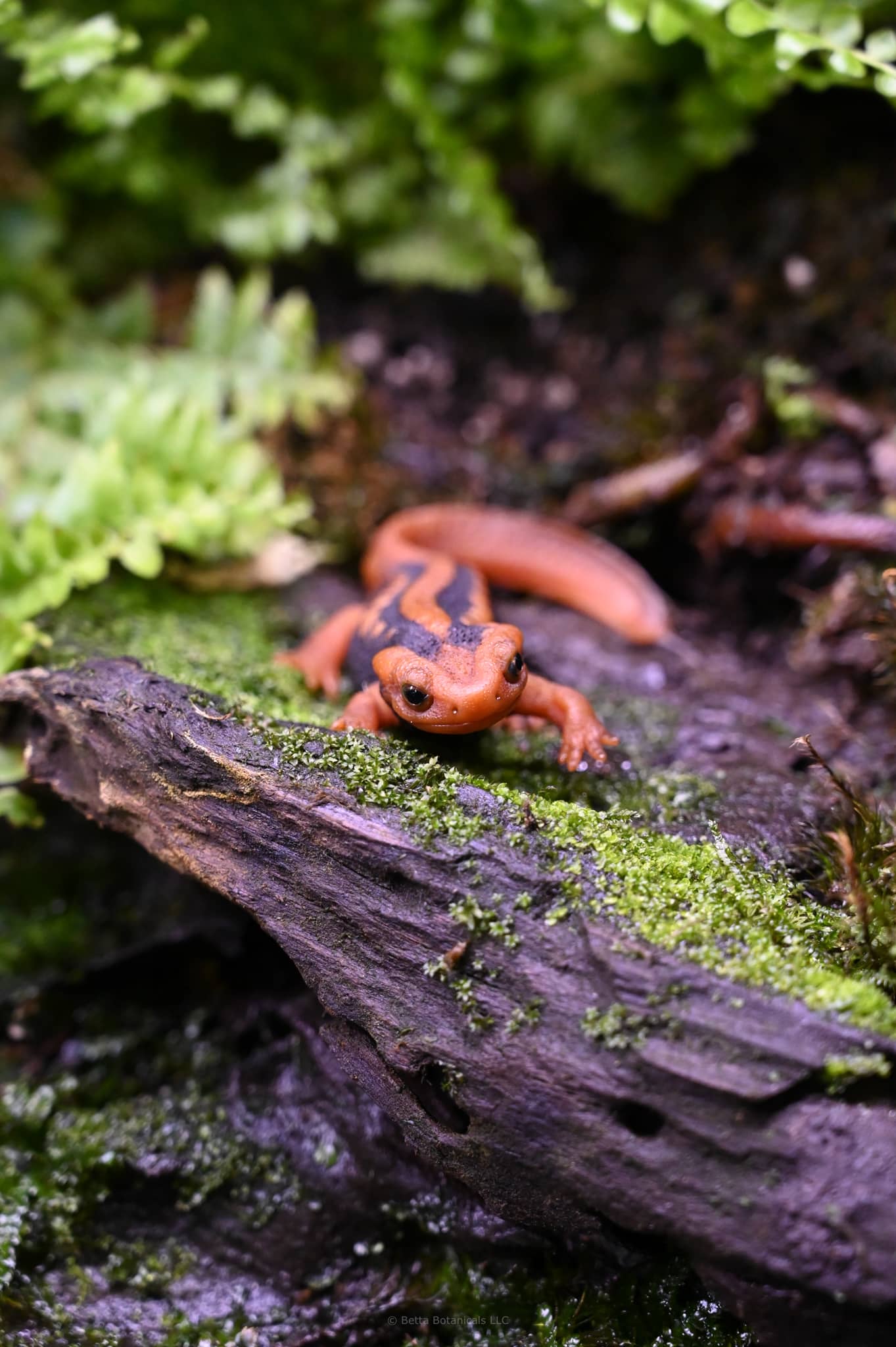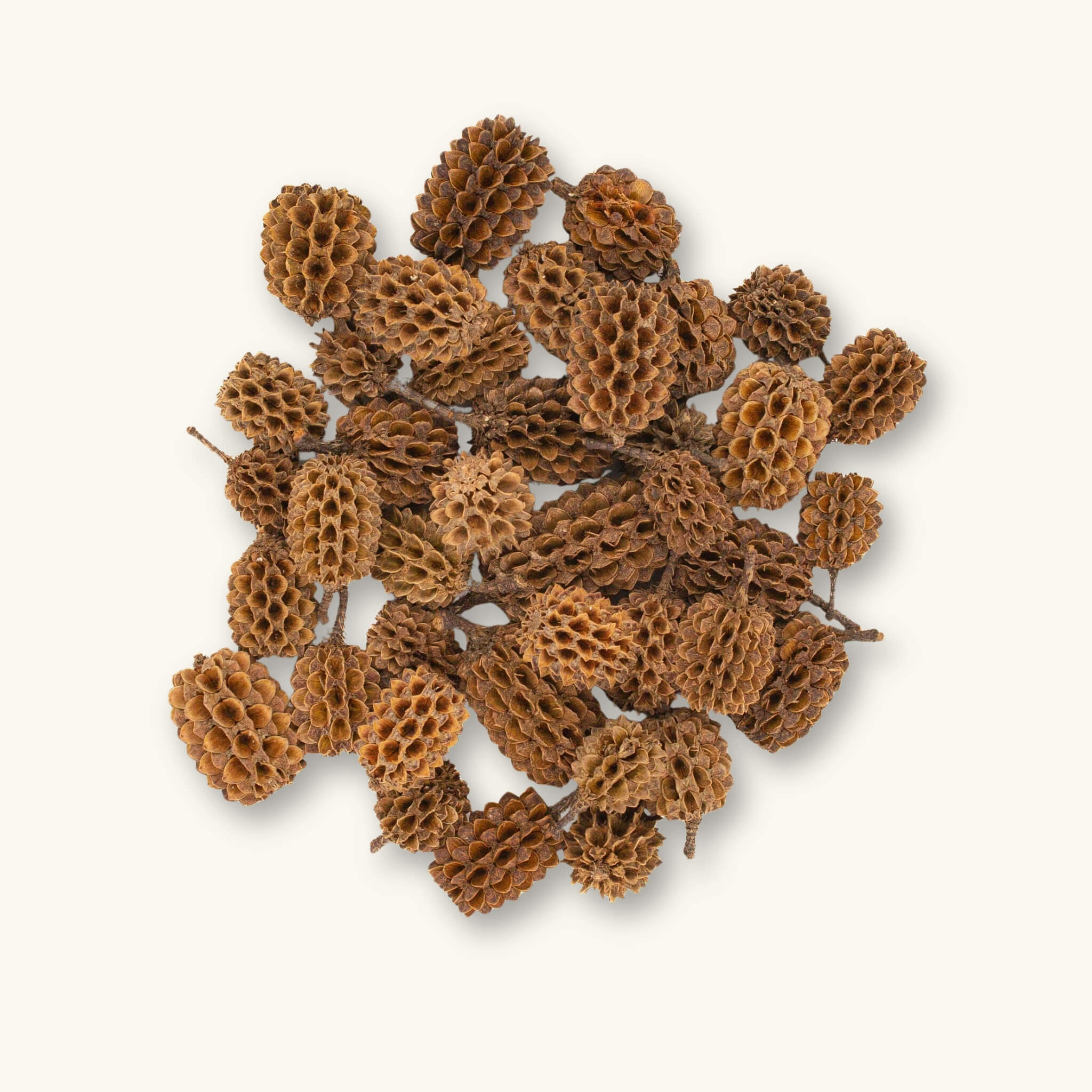
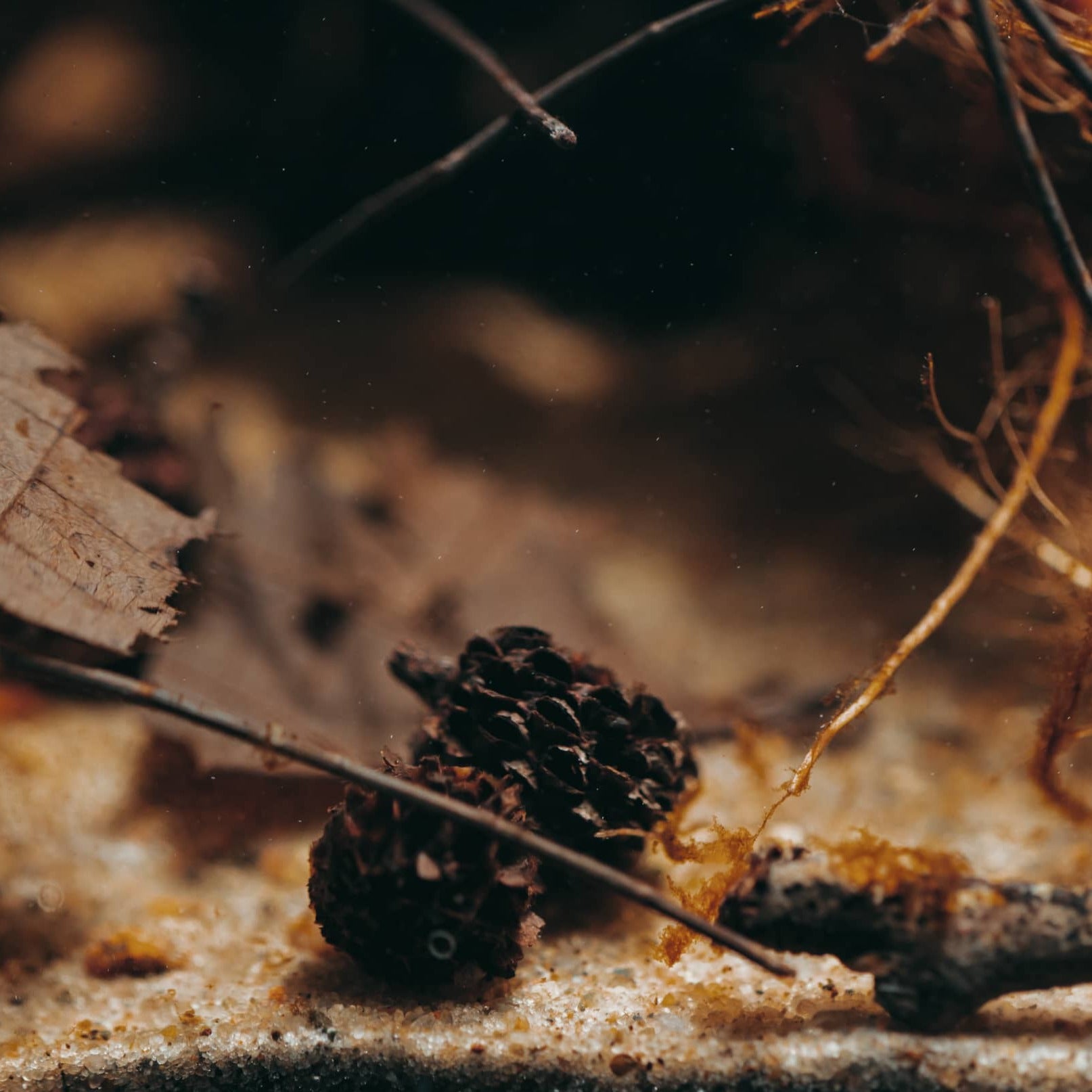
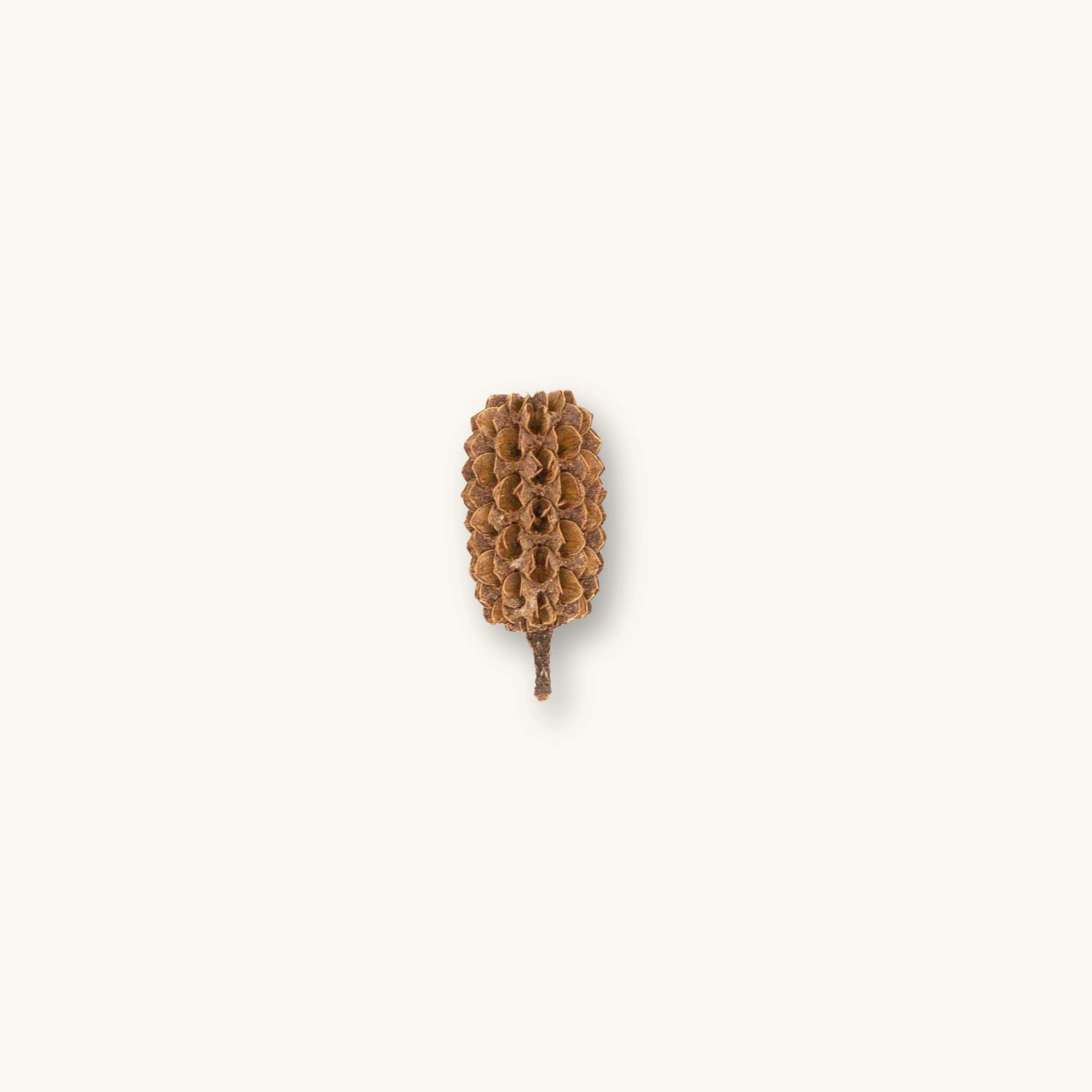
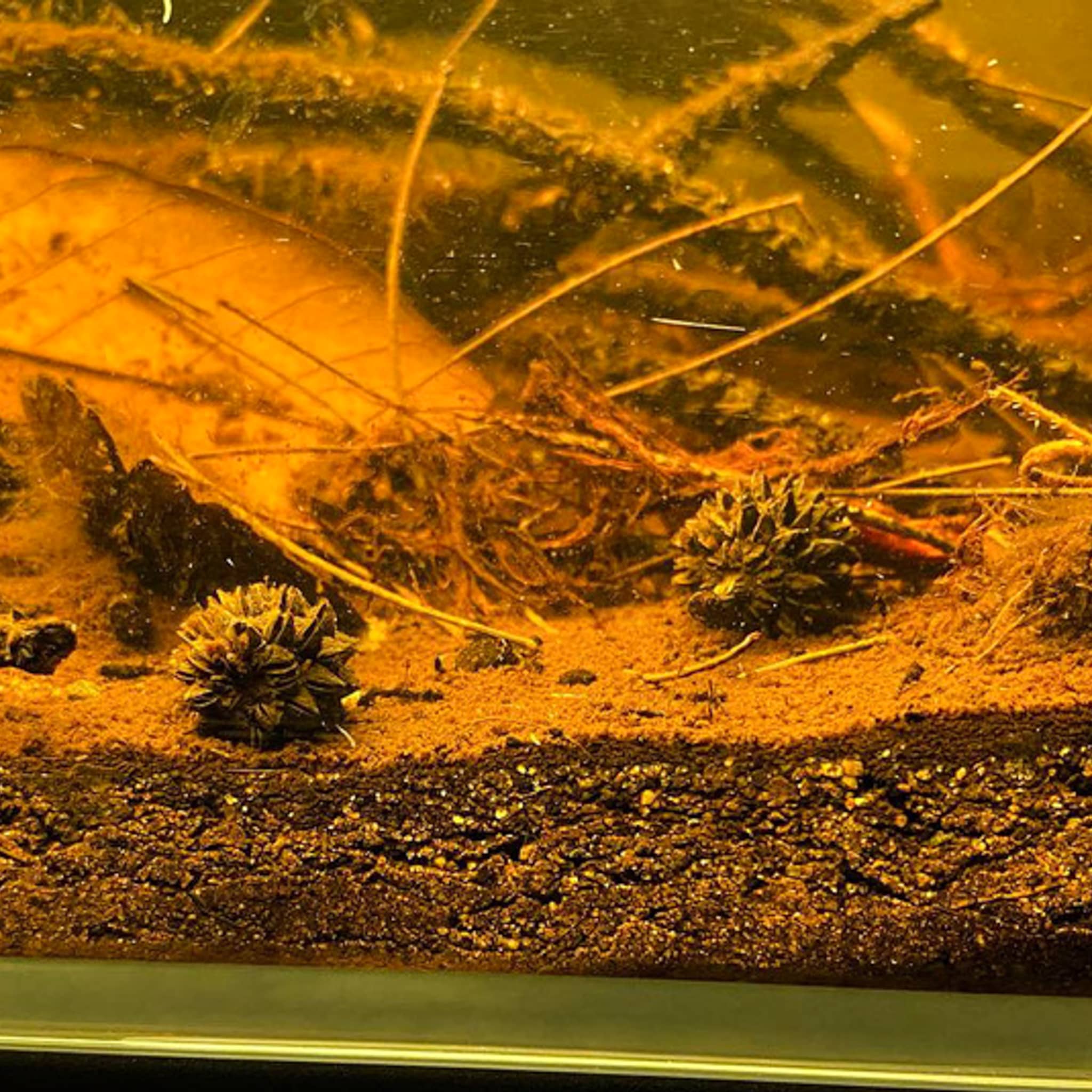
Casuarina Cones | Casuarina equisetifolia
Casuarina Pine Cones on the Surface:
Collected from the coastal forests of Southeast Asia, Casuarina equisetifolia—commonly known as the Australian Pine—produces small, woody cones that serve as both aesthetic and functional elements within botanical method aquariums. These cones resemble miniature alder cones, but with almost no tannin release. They are quite durable and have a high surface area which supports beneficial biofilms that support our shrimp and other microinvertebrates. Though Native to Australia, these cones can be found invasively growing worldwide—thus we coin them as generic tropicals—fitting amongst regionally specific botanicals to help recreate a more natural aquatic leaf litter bed.
Essential Details
- Tannin Level: Low
- Tint Color: Light yellow
- Durability: Long-lasting; decomposes slowly over several months
- Habitat Location: Coastal forests of Australia and Southeast Asia; naturalized in Florida
- Optimal For: Betta species, shrimp, Corydoras, tetras, and cichlids
- Use with Caution: Use cautiously with goldfish and axolotls, as they can pose a choking hazard.
- Size Range: 0.5 to 1 inch in diameter
- Quantities: ~25 g per bag (approximately 40–60 cones depending on size)
Casuarina Pine Cones for Aquariums & Vivariums
These cones perform a similar role to alder cones but with a lighter tint and slower release of tannins—ideal for aquarists seeking a clear water botanical method aquarium. Their hard, textured surfaces provide ideal substrate for biofilm, fungal hyphae, and microbial growth that foster aquatic food webs.
In botanical method aquariums, they contribute to detrital layering and microbial diversity, enriching ecological processes within both freshwater and brackish systems. Over time, they soften and integrate into the substrate, supporting nutrient cycling and creating habitat complexity for small invertebrates. Within the vivarium, Casuarina Cones are an ideal food source for springtails and smaller isopods. They are quick to become encrusted with mosses and other small epiphytic plants.
Beneath the Leaves: Casuarina equisetifolia in the Wild
Along tropical shorelines and estuaries, Casuarina trees thrive in habitats hammered by salt spray and coastal winds. Their cones scatter across sandy soils and mangrove edges, carried inland by tides and storms. In these transitional zones, they mingle with driftwood and decaying leaves, gradually breaking down to feed microorganisms and enrich the coastal detritus layer.
Incorporating these cones into aquariums captures this natural exchange between land and water.
Sustainability Note:
This product’s packaging is home compostable. Just like the botanicals inside, it will break down naturally and return to the soil—because what supports your ecosystem should minimally impact our planet.
Not for human consumption. Preparation required.
This is a natural product—variation in color, shape, and texture is expected.

Casuarina Cones | Casuarina equisetifolia
Home is getting more natural
While the aesthetic appeal of botanicals and tinted water can be quite attractive to us, the recreation of nature to emulate water conditions, feeding patterns, spawning displays, and territory building are the true benefits botanicals provide to our critters.
Botanical FAQs
Compostable Packaging Promise
Our packaging is designed to return safely to the Earth, just like the botanicals inside. Every bag is BPA- and Phthalate-free, GMO-free, and contains no animal products. Each meets ASTM D6400 composting standards, ensuring it can fully break down in a home compost bin.
What are the Fluffy White Growths on my Botanicals?
That’s biofilm and fungi—what we call the “goo phase.” It’s one of the clearest signs that your aquarium is alive and functioning. These growths wax and wane naturally as botanicals decompose. They’re harmless, even beneficial, and will disappear on their own once microbial populations stabilize.
Will botanicals lower the pH of my water?
That depends entirely on your source water. In very soft or RODI water, botanicals can gradually lower pH as tannins and humic substances accumulate. In medium to hard tap water, buffering capacity often resists these shifts, and you may not notice much change. At Betta Botanicals HQ, our very hard water (350+ ppm) shows almost no pH change unless we use botanicals like Alder Cones or Macaranga Leaves.
When should I replace leaves or pods in my tank?
We recommend allowing botanicals to fully break down into detritus, since this fuels microbial life and enriches the substrate. You can remove them once they stop tinting the water, but you’ll lose some of their ecological benefits. Each time you add new botanicals, follow proper preparation and observe your livestock until you learn your aquarium’s rhythm.
Are your products just for bettas?
Nope. Our botanicals are safe for almost all aquariums, terrariums, vivariums, and paludariums. The only exceptions are goldfish and axolotls, which may ingest small pods like alder cones or casuarina cones. For those species, we recommend large leaves such as Indian Almond, Loquat, or Jackfruit.
What are Tannins?
Tannins are natural compounds released by leaves, seed pods, and bark as they decompose in water. They soften water, gently lower pH, and create the characteristic tea-stained tint found in blackwater habitats. But their role goes far beyond color—tannins fuel beneficial bacteria, fungi, and biofilms, which form the foundation of a healthy ecosystem. They also offer mild antifungal benefits and help reduce stress in fish by replicating the natural conditions they’ve evolved in. At their core, tannins are plant-derived antioxidants that connect your aquarium to the same processes at work in wild flooded forests and streams.
